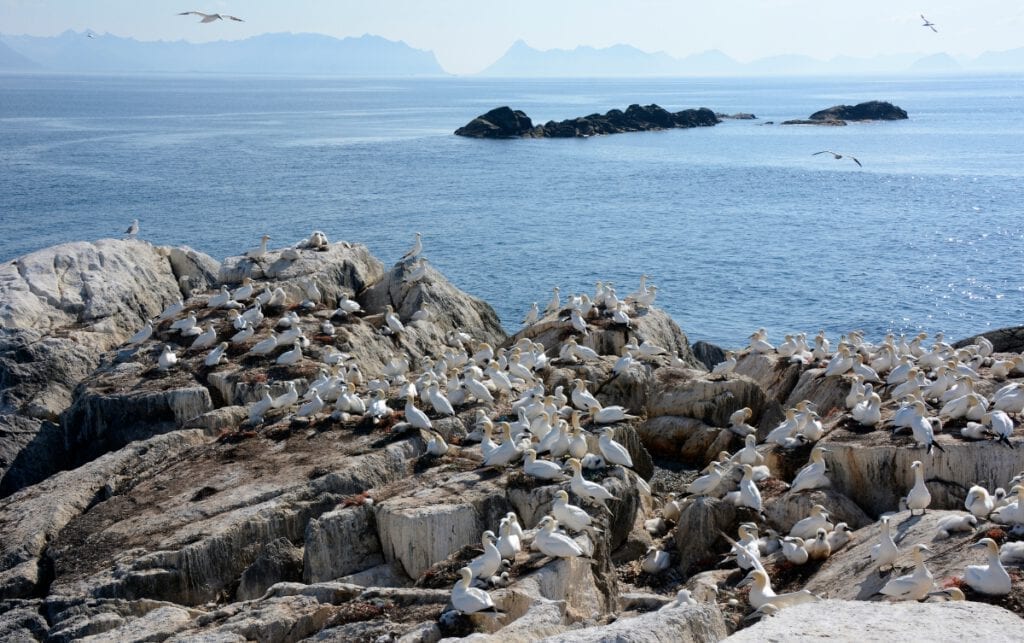Diet of Northern Gannet chicks in North Norway
Northern Gannets established colonies in North Norway in the 1960s, since when the breeding population has increased and spread north- and eastwards. The first birds to colonise North Norway were probably immigrants from the rapidly increasing population in Britain. The spread of Gannets to Norway was possibly associated with the highly productive waters and especially the large stocks of Norwegian spring-spawning Atlantic herring that occur along the Norwegian coast.
The Gannet is a generalist predator with 40 prey species recorded in the diet on both sides of the North Atlantic, but with herring, mackerel and sandeel as principal prey. Other important local supplement are capelin and saithe. All five prey types are energy-rich, shoaling fish that are common in inshore waters in summer in North Norway and, with the exception of sandeels, all occur in the upper water layers.
In this study, food samples (regurgitations) were collected at four colonies: Storstappen, Skarvklakken, Store Ulvøyholmen and Hovsflesa. Analyses of food samples confirmed that Gannets are an opportunistic forager that mainly feed their chicks with herring, mackerel, sandeel and saithe. An overwhelming dominance of single-species food loads suggest that once a fish shoal has been detected, Gannets feed on that shoal until satiation or until the shoal dissolves or dives out of reach.
Read the article:
Herring, saithe and sandeels occur along the Norwegian coast throughout the year whereas mackerel are visitors to the more northern waters during their summer feeding migration. Warming of the North Atlantic after the turn of the millennium led to an extension of mackerel distribution and migration patterns as far north and west as Svalbard and Iceland and increased its availability to Gannets foraging along the North Norwegian coast. That Gannets are opportunistic in their feeding habits and can readily respond to ocean climate changes by seeking out new prey will be beneficial for the species in times of climate change.
Contact person: Rob Barrett, Tromsø Museum
